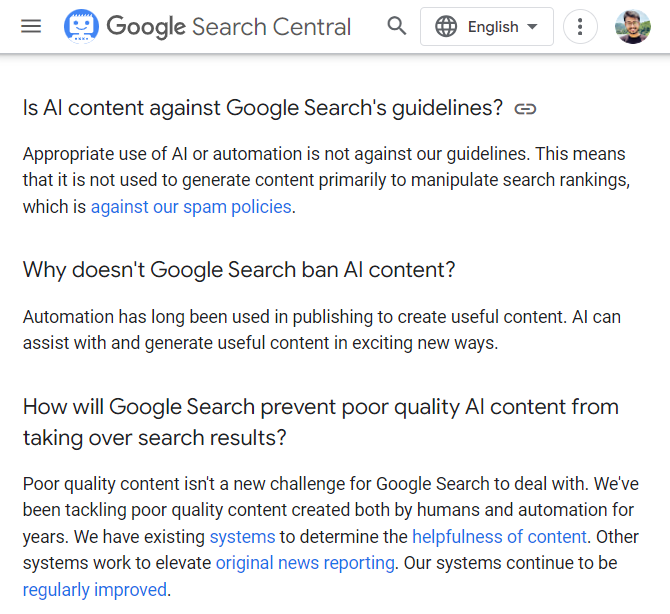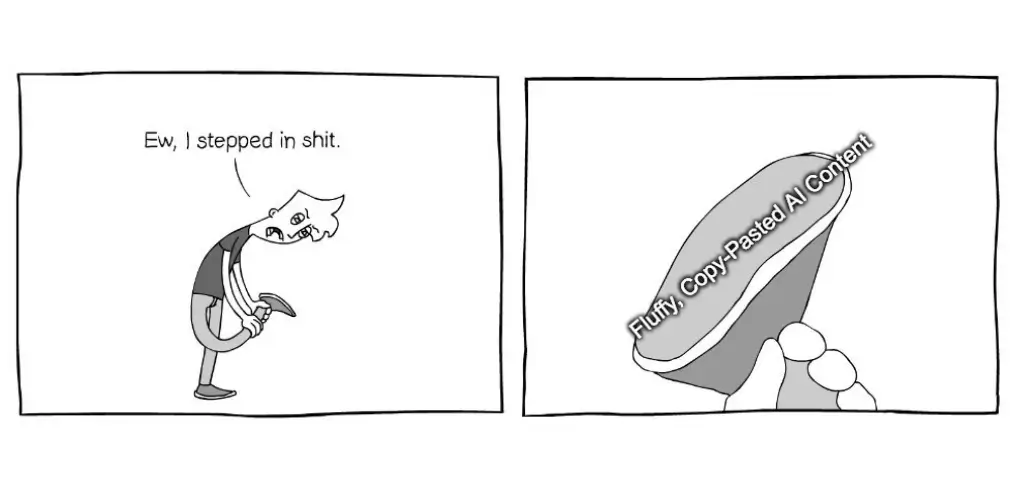Reading time: 7 mins
When it comes to search engines, the concept of “helpful content” seems very subjective.
Some SEOs claim that writing 1500-2500 words is the key (which doesn’t always hold true) while some suggest adding multimedia to the page content — too much of confusion.
Well, not anymore!
In this blog, I’ll show you how to craft winning B2B SaaS content that
- resonates with your target audience
- has a higher probability of ranking well
- drives marketing qualified leads (MQLs)
Contents
Google’s Take on Helpful & Unhelpful Content
The helpful content system is Google’s way of filtering more useful, original content in search results while downgrading content that lacks value for searchers.
Google uses a machine-learning model to automatically assess the “helpfulness” across all the pages of your site.
Low-value pages can still rank for sites having strong experience, expertise, authority, or trust signals. However, removing unhelpful content may boost overall rankings.
The system runs continuously to evaluate new and existing sites. If your traffic tanked due to the algo updates, removing/upgrading low-value content may result in improved rankings in few months.
Now let’s look at some ways to create impactful B2B SaaS content.
1. Get to the Point Quickly
Modern SEO writing should be about giving more information in less content.
But in reality, most long-form write-ups are overly stuffed, fluffy content created by cheap paid-per-word writers. And misuse of AI tools has made things even worse.
The Way Out
- Short intros: In a few lines mention what’s in it for the reader and how it will change their current situation.
- Cut the fluff wherever necessary: If a concept can be explained in 2-3 lines, why stretch it to 2-3 paragraphs? If it’s a complex one, then it makes sense for a detailed explanation. Or it can be interlinked to a separate glossary-styled content format, something like Ahrefs’ SEO Glossary.
- Short outros: Include the key takeaway(s) and a call-to-action (CTA) in the conclusion/outro. That’s it.
2. Don’t Rely on Word Count
Content briefing tools (like Scalenut) will pull out word count stats for your target query. Here’s an example:

Should you consider these figures at face value? Absolutely not.
Why? Because there’s no official clarification from Google that a certain number/range of word count qualifies for helpful content.
The Way Out
Stop chasing arbitrary, tool-suggested word counts.
Focus on content widening instead.
What’s content widening? Andrew Holland has an excellent teardown on this:
Martin Splitt (Developer Advocate at Google) also clarifies that word count is not a ranking factor.
3. Reveal Who’s Behind the Content
Adding authorship to your content doesn’t improve rankings. Google SearchLiaison confirmed this in a tweet in response to a Verge article:
“Author bylines aren’t something you do for Google, and they don’t help you rank better. They’re something you do for your readers — and publications doing them may exhibit the type of other characteristics our ranking systems find align with useful content.”
However, mentioning author bios has certain upsides:
- Supports YMYL (Your Money, Your Life) content. These are topics related to money, security, health, career, or anything that affects personal well-being.
- When content is shown to be written and/or reviewed by an expert, it establishes credibility and improves user experience.
- Google picks up authors as “person entities”, which creates an opportunity to get into Google’s Knowledge Graph.
4. Make Content People-First
When you put more weight on vanity metrics (like clicks and CTR), actual user/searcher intent gets defeated.
Also, too much reliance on keyword tools diminishes the blog intent. This makes your content just similar to the ones existing in the SERPs.
The Way Out
- Jobs-To-Be-Done approach: Shallow audience insights don’t work. Use the JTBD framework to understand why people search and what they really want to achieve.
- Blue Ocean SEO: Creating content with the user in mind is the gist of a Blue Ocean SEO strategy. This opens up possibilities for differentiation, creativity, and targeting topics that people love to consume.
- Self-assessment: Before publishing any piece, always ask these questions:
- does it help the reader?
- will it be worth their time?
- will it move them closer to their goal?
If you get all yes, it’s good to publish.
5. Use AI for Assistance
While AI can churn out a lot of content in few clicks, it lacks the finesse and nuance of human creativity.
If AI is provided the right context, it can
- identify content gaps
- generate blog/page title ideas
- reduce cognitive load with initial drafts
- help with basic grammar and spelling mistakes
Google even confirms that appropriate use of AI is not against their guidelines.

So play with AI tools, learn how to use them, and always double-check via human editors.
It’s unlikely that AI will replace human writers anytime soon.
6. Make Space for Memes & Infographics
B2B marketing has long been perceived as boring.
A survey reveals: 49% of B2B buyers find majority of B2B websites to be less interesting and creative when compared to consumer websites.
So what’s the best way to get more passive links and shares?
Relatable memes and infographics — they make long-form content fun to read, break text-only patterns, and help it stand out.
Few important pointers:
- Make memes a part of your content strategy, but don’t overuse them. You don’t want to give users the impression that your company and its products are not the real deal.
- Get internal validation. If majority of your colleagues find the creatives amusing, it’s likely safe. Otherwise, you risk appearing tasteless.
(Not a pro memer, but I love collecting memes 😉)
7. Add Unique Expert Quotes
When we say subject matter expert or SME, we mean someone who deeply knows their stuff about a certain topic. They could be an author, researcher, executive, or a practitioner.
Including relevant, trusted voices gives your content
- organic shares, as you amplify personal brands
- social proof that others back up what you’re saying
- a more balanced perspective rather than a one-sided lecture
So it’s a great idea to reach out to credible SMEs and weave their insights seamlessly into your narrative.
Creating Valuable Content is Not a One-Shot Thing
Search engines are tricky and volatile. So curating relevant content requires loads of testing and iterations.
Need help with your content strategy? Drop me a line.


Surely an updated article in this domain. Especially, the references are spot on.
Waiting for many such from you Soumya
More on the way. Thanks for reading!